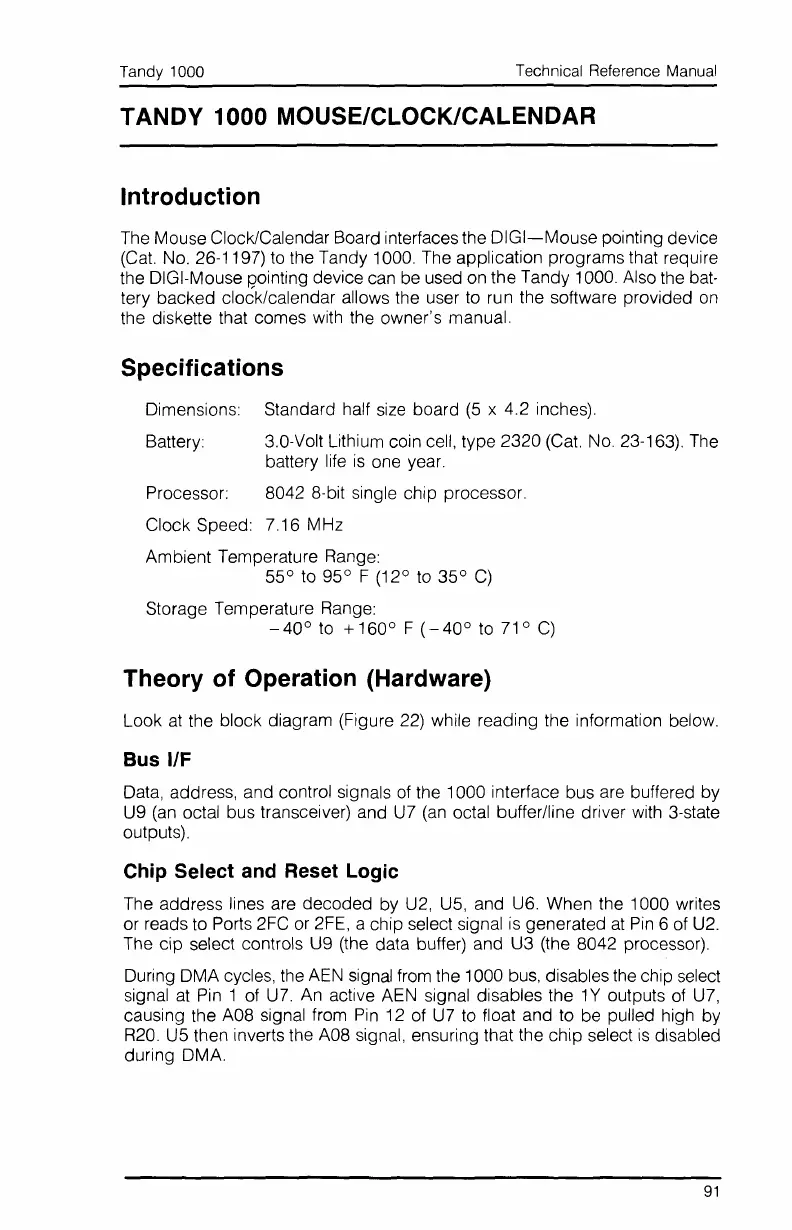Tandy 1000
Technical Reference Manual
TANDY 1000 MOUSE/CLOCK/CALENDAR
Introduction
The Mouse Clock/Calendar Board interfaces the
DIGI-Mouse
pointing device
(Cat.
No. 26-1197)
to
the Tandy 1000. The application programs that require
the DIGI-Mouse
gointing device can be used on the Tandy 1000. Also the
bat-
tery backed clock/calendar allows the user to run the software provided
on
the diskette that comes with the owner's manual.
Specifications
Dimensions: Standard half
size
board
(5
x 4.2 inches).
Battery: 3.0-Volt Lithium coin cell, type 2320 (Cat.
No.
23-163).
The
battery
life
is
one year.
Processor: 8042 8-bit single chip processor.
Clock Speed: 7.16 MHz
Ambient Temperature Range:
55°
to
95°
F (12°
to
35°
C)
Storage Temperature Range:
-40°
to
+ 160° F
(-40°
to
71
° C)
Theory of Operation (Hardware)
Look
at
the block diagram (Figure
22)
while reading the information below.
Bus IfF
Data, address, and control signals
of
the 1000 interface bus are buffered by
U9
(an
octal bus transceiver) and
U7
(an
octal buffer/line driver with 3-state
outputs).
Chip Select and Reset Logic
The address lines are decoded by U2,
U5,
and U6. When the 1000 writes
or reads to Ports 2FC
or
2FE,
a chip select signal
is
generated
at
Pin
6 of
U2.
The cip select controls U9 (the data buffer) and U3 (the 8042 processor).
During DMA cycles, the
AEN
signal from the 1000 bus, disables the chip select
signal
at
Pin
1
of
U7.
An
active
AEN
signal disables the
1Y
outputs
of
U7,
causing the A08 signal from
Pin
12 of
U7
to
float and to be pulled high by
R20.
U5 then inverts the A08 signal, ensuring that the chip select
is
disabled
during DMA.
91
